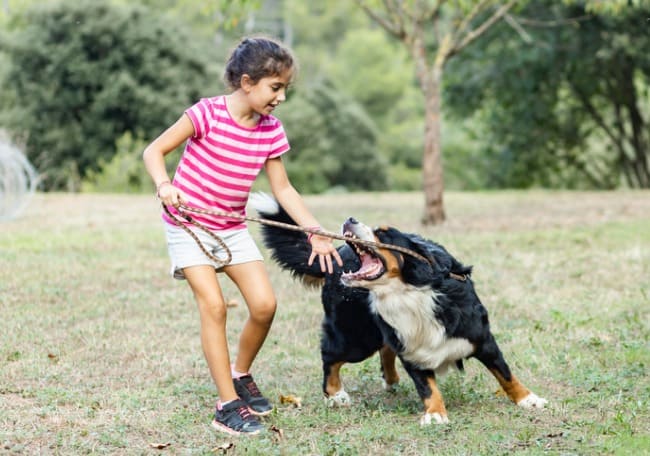Mordeduras de perros en niños

1 Macpherson CN, Meslin FX, Wandeler AI. Dogs, zoonoses and public health. Wallingford, U.K: CABI Publishing, 2013.
2 World Health Organization. Animal Bites: Dog bites [online], 2018. Available: https://www.who.int/news-room/fact-sheets/detail/animalbites [Accessed Jun 2020].
3 Pet Food Manufacturers’ Association. Dog population 2019 [online], 2019. Available: https://www.pfma.org.uk/dog-population-2019 [Accessed Mar 2020].
4 Digital NHS. Finished admission episodes and finished consultant episodes for accidents and dog bites, England, 2017-18 [online], 2018. Available: https://digital.nhs.uk/data-and-information/ find-data-and-publications/supplementary-information/2018- supplementary-information-files/finished-admission-episodes-andfinished-consultant-episodes-for-accidents-and-dog-bites-england2017-18 [Accessed Mar 2020].
5 Loder RT. The demographics of dog bites in the United States. Heliyon 2019;5:e01360.
6 NHS Digital. Provisional Monthly HES for admitted patient care, outpatients and Accident and Emergency Data April 2014 to February 2015: Topic of interest: admissions caused by dogs and other mammals [online], 2015. Available: https://files.digital.nhs.uk/ pdf/h/6/animal_bites_m12_1415.pdf [Accessed Mar 2020].
7 Hall S, Dolling L, Bristow K, et al. Companion animal economics: the economic impact of companion animals in the UK. Wallingford, U.K.: CABI Publishing, 2016.
8 Gilchrist J, Sacks JJ, White D, et al. Dog bites: still a problem? Inj Prev 2008;14:296–301.
9 Fein J, Bogumil D, Upperman JS, et al. Pediatric dog bites: a population-based profile. Inj Prev 2019;25:290–4.
10 Mannion CJ, Graham A, Shepherd K, et al. Dog bites and maxillofacial surgery: what can we do? Br J Oral Maxillofac Surg 2015;53:522–5.
11 Reisner IR, Nance ML, Zeller JS, et al. Behavioural characteristics associated with dog bites to children presenting to an urban trauma centre. Inj Prev 2011;17:348–53.
12 Caffrey N, Rock M, Schmidtz O, et al. Insights about the epidemiology of dog bites in a Canadian City using a dog aggression scale and administrative data. Animals 2019;9:324.
13 Oxley JA, Christley R, Westgarth C. Contexts and consequences of dog bite incidents. J Vet Behav 2018;23:33–9.
14 Westgarth C, Brooke M, Christley RM. How many people have been bitten by dogs? A cross-sectional survey of prevalence, incidence and factors associated with dog bites in a UK community. J Epidemiol Community Health 2018;72:331–6.
15 Boat BW, Dixon CA, Pearl E, et al. Pediatric dog bite victims: a need for a continuum of care. Clin Pediatr 2012;51:473–7.
16 Ji L, Xiaowei Z, Chuanlin W, et al. Investigation of posttraumatic stress disorder in children after animal-induced injury in China. Pediatrics 2010;126:e320–4.
17 Peters V, Sottiaux M, Appelboom J, et al. Posttraumatic stress disorder after dog bites in children. J Pediatr 2004;144:121–2.
18 Westgarth C, Watkins F. Impact of dog aggression of victims. In: Mills DS, Westgarth C, eds. Dog bites: a multidisciplinary perspective. Sheffield, U.K: 5m Publishing, 2017: 309–20.
19 Shields LBE, Bernstein ML, Hunsaker JC, et al. Dog bite-related fatalities: a 15-year review of Kentucky medical examiner cases. Am J Forensic Med Pathol 2009;30:223–30.
20 The Committee on Trauma. Advanced trauma life support course manual. 10th edn. Chicago, IL, U.S.A: American College of Surgeons, 2018.
21 Mills DS, Demontigny-Bédard I, Gruen M, et al. Pain and problem behavior in cats and dogs. Animals 2020;10:318.
22 Guy NC, Luescher UA, Dohoo SE, et al. Risk factors for dog bites to owners in a general veterinary caseload. Appl Anim Behav Sci 2001;74:29–42.
23 Newman J, Christley RM, Westgarth C. Risk factors for dog bites-an epidemiological perspective. In: Mills DS, Westgarth C, eds. Dog bites: a multidisciplinary perspective. Sheffield, U.K: 5m Publishing, 2017: 133–58.
24 National Institute for Health and Care Excellence. Child maltreatment: when to suspect maltreatment in under 18s [online], 2009. Available: http://www.nice.org.uk/guidance/cg89 [Accessed Mar 2020].
25 Elizabeth Murray G, Murray GE. Examining evidence on dog bite injuries and their management in children. Nurs Child Young People 2017;29:35–9.
26 Langguth P, Leissner L, Zick G, et al. Why Asplenic Patients Should Not Take Care of the Neighbour's Dog? A Fatal Course of Capnocytophaga canimorsus Sepsis. Case Rep Infect Dis 2018;2018:3870640. 27 Cook JA, Sasor SE, Soleimani T, et al. An epidemiological analysis of pediatric dog bite injuries over a decade. J Surg Res 2020;246:231–5.
28 National Institute for Health and Care Excellence. Bites - human and animal: Scenario: managing a dog or cat bite, 2018. Available: https://cks.nice.org.uk/bites-human-and-animal#!scenario:1 [Accessed Mar 2020].
29 Rasmussen D, Landon A, Powell J, et al. Evaluating and treating mammalian bites. JAAPA 2017;30:32–6.
30 Public Health England. Guidelines on managing rabies postexposure October 2019, 2019. Available: https://assets.publishing. service.gov.uk/government/uploads /system/uploads/attachment_ data/file/843148/PHE_guidelines_on_rabies_post-exposure_ treatment.pdf [Accessed Mar 2020].
31 Norman C, Stavisky J, Westgarth C. Importing rescue dogs into the UK: reasons, methods and welfare considerations. Vet Rec 2020;186:248.
32 Public Health England. Tetanus: the green book, chapter 30, 2019. Available: https://www.gov.uk/government/publications/tetanus-thegreen-book-chapter-30 [Accessed Mar 2020].
33 Medeiros I, Saconato H. Antibiotic prophylaxis for mammalian bites. Cochrane Database Syst Rev 2001;2:CD001738.
34 Cheng H-T, Hsu Y-C, Wu C-I. Does primary closure for dog bite wounds increase the incidence of wound infection? A meta-analysis of randomized controlled trials. J Plast Reconstr Aesthet Surg 2014;67:1448–50.
35 Paschos NK, Makris EA, Gantsos A, et al. Primary closure versus non-closure of dog bite wounds. A randomised controlled trial. Injury 2014;45:237–40. 36 De Keuster T, Lamoureux J, Kahn A. Epidemiology of dog bites: a Belgian experience of canine behaviour and public health concerns. Vet J 2006;172:482–7.
37 National Institute for Health and Care Excellence. Post-Traumatic stress disorder, 2018. Available: https://www.nice.org.uk/guidance/ ng116 [Accessed Mar 2020].
38 Meints K. Children and dogs- risk and effective dog bite prevention. In: Mills DS, Westgarth C, eds. Dog bites: a multidisciplinary perspective. Sheffield, U.K: 5m Publishing, 2017: 390–401.
39 Beck AM, Jones BA. Unreported dog bites in children. Public Health Rep 1985;100:315.
Comentarios
Para ver los comentarios de sus colegas o para expresar su opinión debe ingresar con su cuenta de IntraMed.






